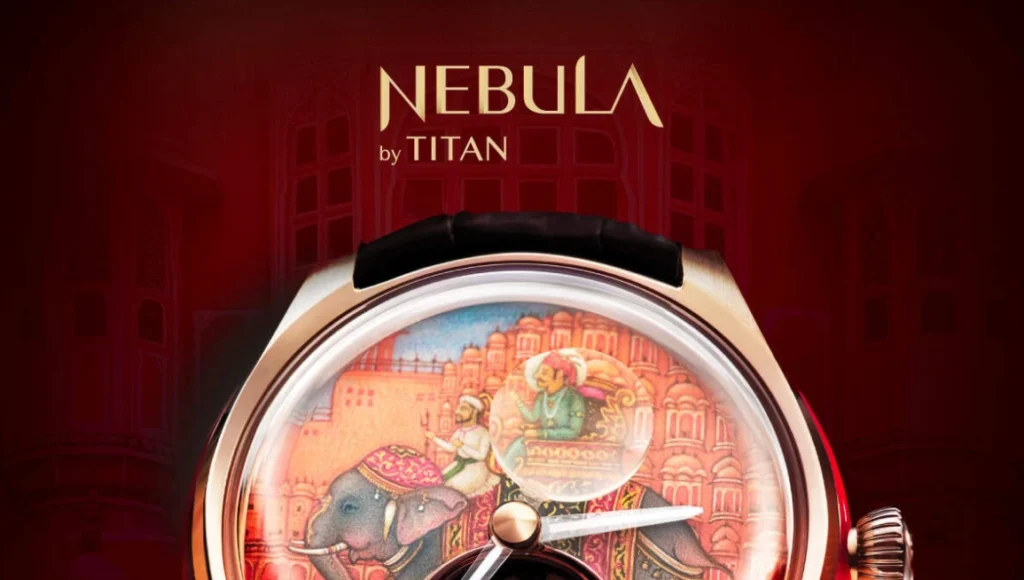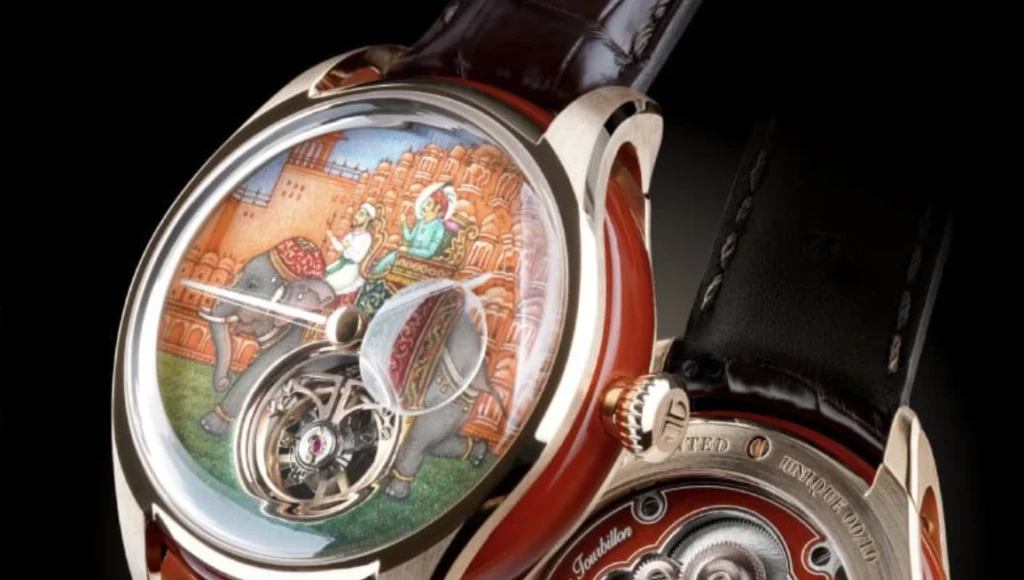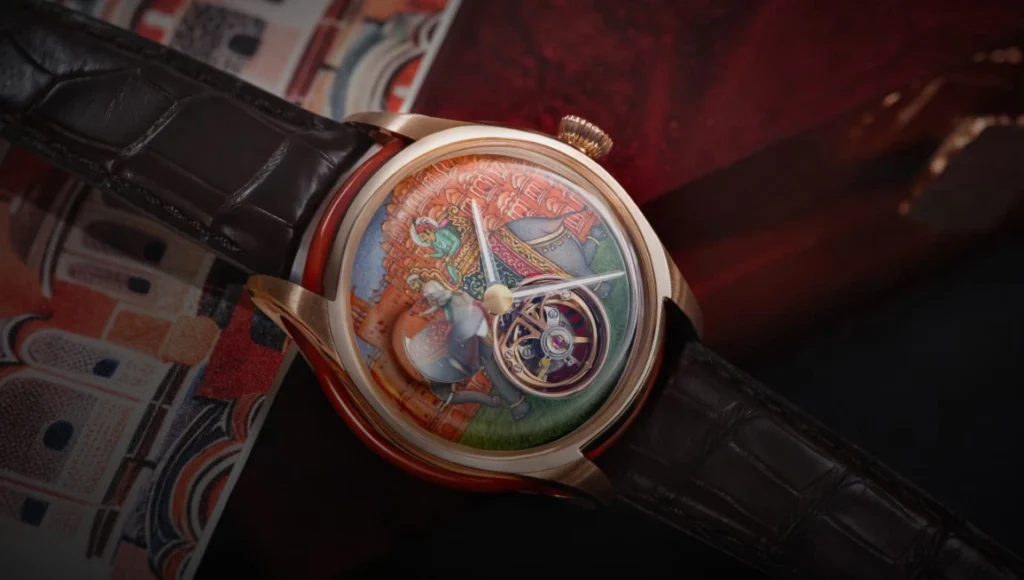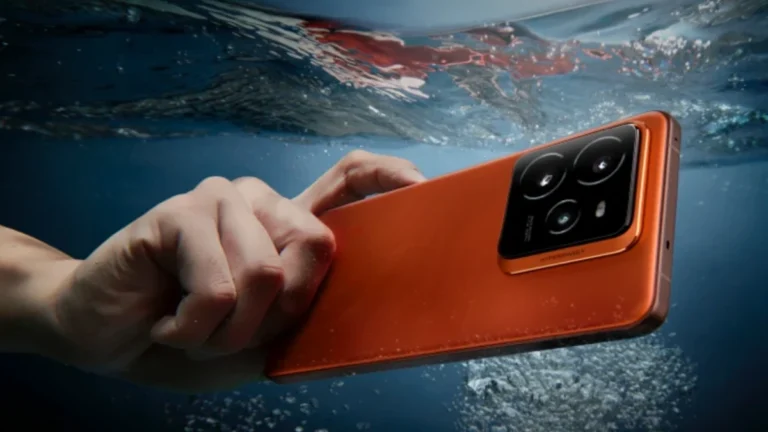
Titan Luxury Watch: Titan has just rewritten the rules of Indian watchmaking with the unveiling of its most luxurious and artistic creation yet—Titan Nebula Jalsa. Priced at a jaw-dropping ₹40.5 lakh, this timepiece costs as much as a premium luxury SUV like the Toyota Fortuner. But Jalsa isn’t just a watch—it’s a wearable work of art, a tribute to Indian heritage, and Titan’s bold entry into the elite global luxury watch space. Limited to just ten pieces, Jalsa marks the beginning of a new era for Indian horology, combining art, tradition, and world-class mechanics.
Designed as a Tribute to Hawa Mahal’s Regal Legacy
Jalsa is inspired by Jaipur’s iconic Hawa Mahal, one of India’s most celebrated monuments, commemorating its 225th anniversary. The dial of the watch is not printed or digitally rendered—it’s a hand-painted miniature painting, portraying a Rajput king riding an elephant, guided by a mahout, set against the majestic backdrop of the Hawa Mahal. This dial is created using natural gemstones on intricately carved marble, and hand-painted by none other than Padma Shri awardee Shakir Ali, one of the last living masters of Persian-style miniature art. Each dial takes hours of skilled craftsmanship, making every piece a unique collector’s treasure.
Intricate Craftsmanship and a Flying Tourbillon Heart

What makes Jalsa more than just a piece of jewelry is its in-house Flying Tourbillon movement, a hallmark of high horology. This intricate mechanism—made of 144 parts and 14 rubies—enhances the accuracy of timekeeping by counteracting gravitational errors. Visible through a sapphire crystal exhibition caseback, the movement isn’t just functional, but beautifully displayed like a museum piece. Adding to the grandeur, the watch’s internal bridges are constructed using red Sulemani stone, adding another layer of Indian architectural charm. This fusion of engineering and traditional craftsmanship is what puts Jalsa in the same league as global luxury brands.
Marble Dials Add Soul, Depth, and Individuality
Interestingly, the dial of the Jalsa is crafted from marble, chosen after experimenting with materials like metal, paper, and wood. Why marble? It not only honors the material used in Indian royal architecture, but also preserves the brilliance of gemstone-based colors over time. While the marble added weight to the watch, it allowed for an unmatched level of detail and texture—making each dial truly one-of-a-kind. The artistic precision required to hand-paint on marble is immense, and this bold material choice gives the watch both historical context and individual personality, turning it into a wearable canvas.
A Statement of India’s Craft, Luxury, and Global Ambition

With the launch of Jalsa, Titan is sending a clear message—it’s ready to compete globally in the luxury segment. Jalsa doesn’t just celebrate India’s royal history; it redefines the future of Indian watchmaking. By merging mechanical innovation with traditional Indian art, Titan has built something that appeals to both connoisseurs of haute horlogerie and lovers of fine Indian craftsmanship. The watch has even been entered in the prestigious Grand Prix d’Horlogerie de Genève (GPHG) 2025, considered the Oscars of the watch world. And with only 10 pieces ever made, Jalsa becomes not just Titan’s most expensive watch, but also one of India’s most iconic.
Disclaimer: This article is for informational purposes only. All product features and pricing are based on public announcements and may vary. For official specifications and availability, please refer to Titan’s official channels.








